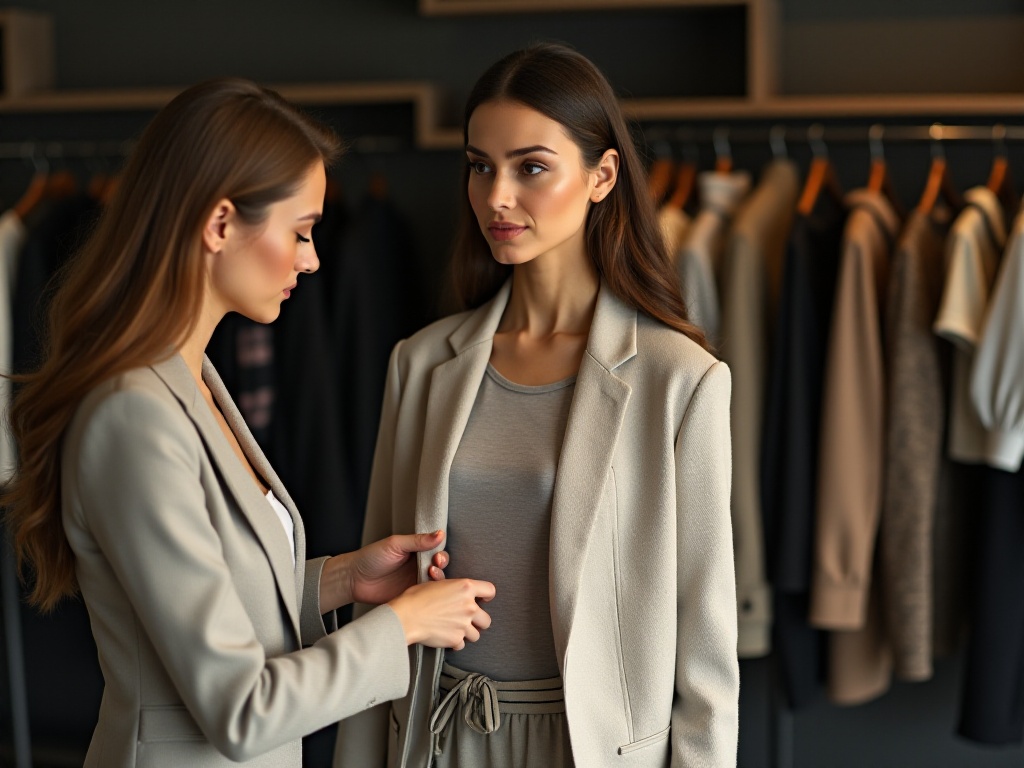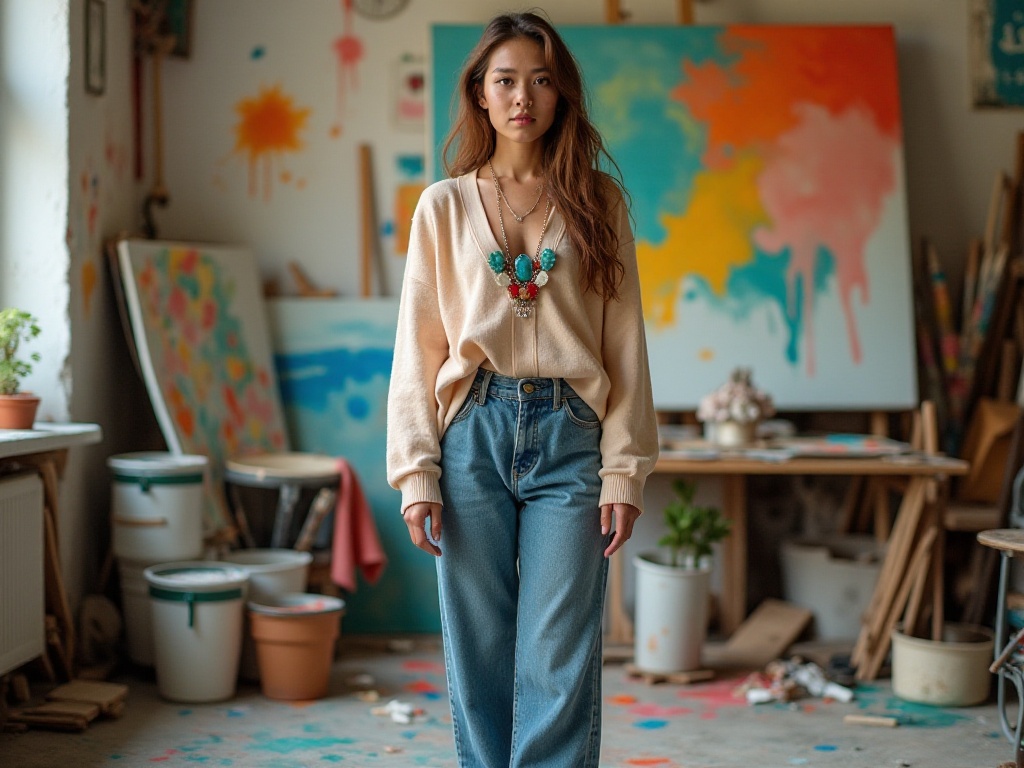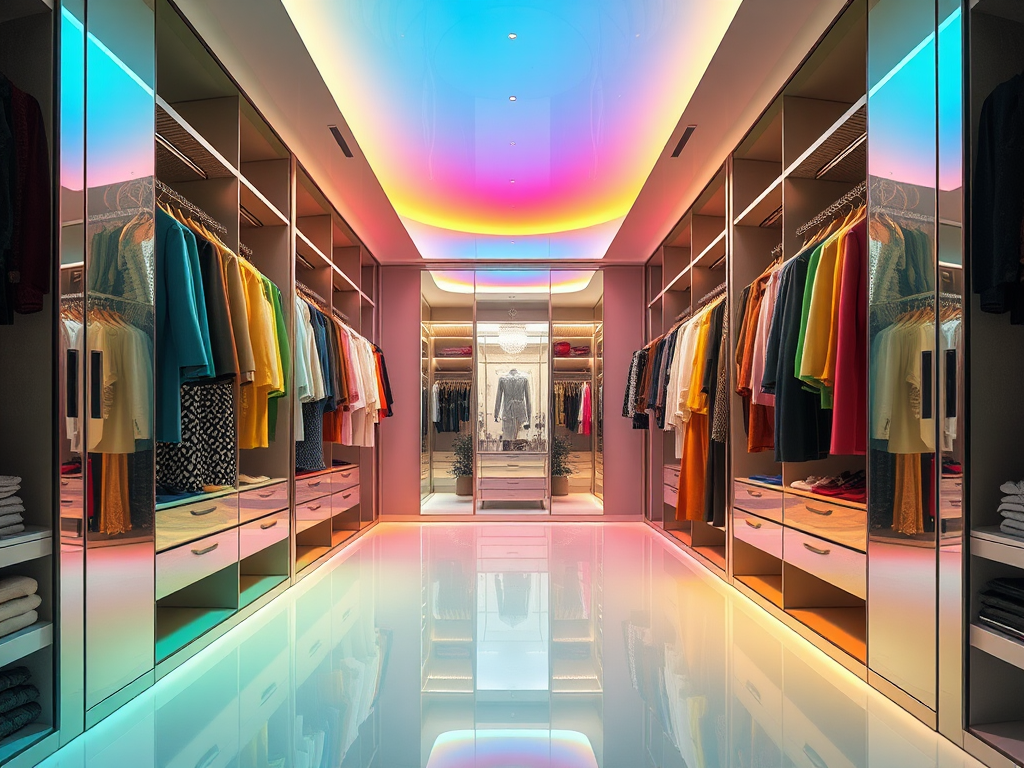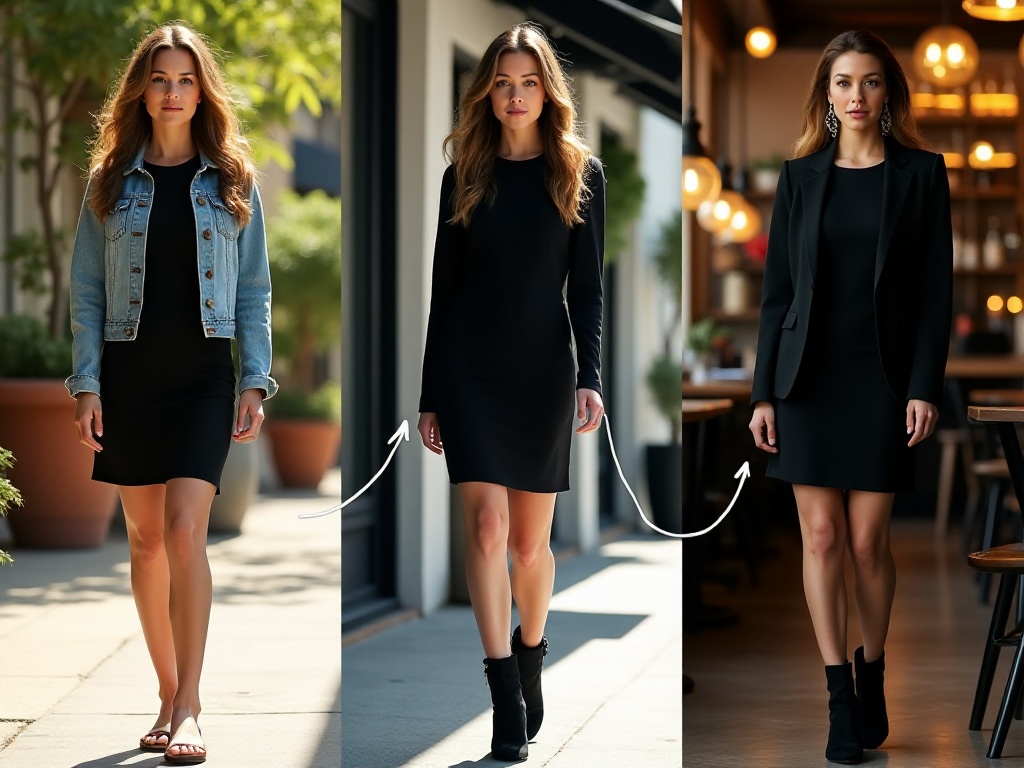The Struggle
Standing confused in front of my closet every morning has become my daily routine. The closet is packed with clothes of various styles: sporty casual, work commute, date party wear, and seasonal items. Just T-shirts alone could form a small mountain, yet every time I need to go out, I still fall into that anxiety of "having nothing to wear."
Looking at these clothes, some still have price tags attached, some have been forgotten in corners, and I can't even remember when I bought them. Every time I go shopping, I get attracted by various "discount," "new arrival," and "limited edition" tags, but the clothes I bring home are often like ephemeral flowers, worn once or twice before being buried in the depths of my closet gathering dust.
This situation continued until last year when my closet was so full that the clothing rod almost detached from the wall - that's when I realized things had to change.

The Way of Minimalism
After years of exploration and trial, I finally understood one principle: fashion is never achieved through hoarding. Those who truly understand fashion often don't have many pieces in their closet, but each item is carefully selected, and every outfit is thoughtfully planned.
For example, my good friend Little K, who works in the fashion industry, has an surprisingly tidy closet. Whenever I ask about her shopping criteria, she always says: "If you can't immediately think of at least three ways to match a piece of clothing, don't buy it." This statement was an eye-opener for me.
True fashion experts all understand this principle: rather than hoarding a pile of dispensable clothes, it's better to carefully select a few versatile pieces. They focus their energy on clever matching and expressing personal style, rather than blindly chasing trends and shopping impulsively.
The Closet Revolution
The big spring cleaning last year was a turning point in my fashion perspective. When I took out all my clothes and laid them on the bed, the scene was overwhelming: 87 tops, 32 pairs of pants, 24 dresses, 16 jackets... The quantity was shocking even to myself.
More shocking was that at least one-third of these clothes hadn't been worn for over six months. Thinking carefully about my daily wearing habits, I basically rotated through the same few sets on workdays, and wore just a few most comfortable pieces on weekends. Isn't this the classic 80/20 rule?
I started to seriously consider: why did I buy so many clothes? Some were impulse purchases, some were due to irresistible discounts, and others were trending items I followed. But in the end, these impulsive consumptions only brought temporary satisfaction and an increasingly chaotic closet.

Quality is King
I used to think that buying several affordable pieces was more economical than buying one expensive item. But reality gave me a harsh lesson: those cheap clothes bought on impulse either had quality issues and lost shape after a few wears; or had poor fabric that faded after one wash; or were too trendy and became unwearable after the season.
Looking back now, the money spent on those "cheap" clothes could have bought several high-quality basic pieces. For example, the cashmere coat I bought for over 2000 two years ago seemed terribly expensive at the time, but after more than two years of wear, it still maintains its shape and pairs well with both pants and dresses.
In contrast, those fast fashion items costing tens or hundreds of dollars didn't last even one season. When you do the math, which is really more economical? This made me understand a principle: rather than buying a pile of inferior products for their cheapness, it's better to carefully select a few quality pieces.

Basic Matching
I first learned about the concept of a capsule wardrobe from a French fashion blogger. She advocated using less than 30 basic pieces to create over 100 different looks. Initially, I thought it was impossible, but after putting it into practice, I found it to be a very practical concept.
Take the white shirt for example - it might be the most versatile piece. Paired with a black pencil skirt on workdays, it instantly creates a sharp professional look; with ripped jeans on weekends and rolled-up sleeves, it becomes casual and artistic; for evening dates, just add a delicate necklace and a low ponytail, and it immediately creates an elegant and intellectual feel.
Similarly, a pair of black trousers has unlimited matching possibilities. With a T-shirt it's perfect for commuting, with a shirt it's formal office wear, with a knit sweater it's sophisticated and ladylike, with a leather jacket it's cool and modern. The key is that these pieces never go out of style, and one purchase can last for several years.
Color Matching
Honestly, I used to love buying various bright colors, thinking it showed personality. But in the end, I found that those overly bright colors could often only be worn alone, were difficult to match with other clothes, and were easily remembered by others, making me hesitant to wear them frequently.
Later, I learned a technique: limit 80% of your closet to neutral colors. Colors like black, white, gray, navy blue, and camel are versatile and timeless. These colors are not only easy to match but also don't go out of style. The remaining 20% can be bright-colored pieces used as accents to make the overall outfit more interesting.
For example, I now have a royal blue silk shirt in my closet. Although the color is quite special, it's easy to match because my other clothes are neutral colors. It's a safe choice with black trousers, creates a different style with a beige skirt, and even works well with jeans.
Personal Expression
Many people think minimalist style is boring, but that's not true. Minimalism doesn't equal monotony; it's about finding sophistication in simplicity. For example, the choice of accessories, fabric textures, and tailoring details are all great ways to express personality.
Take my favorite camel coat for example - while the color is basic, its silhouette design is special. The collar can be worn up or down, the sleeves can be rolled up to show the inner layer - these details make this seemingly ordinary coat unique.
Moreover, when your closet is no longer cluttered, you have more energy to think about how to express personality through matching. For instance, with the same white shirt and jeans combination, you can create different styles through various ways of rolling sleeves or tucking in the shirt. Different bags, shoes, and jewelry will create completely different effects.
Practical Advice
After such a long time of practice, I've summarized some practical suggestions that I hope will help you start your minimalist wardrobe journey.
First is closet organization. Choose a sunny weekend to take out all your clothes and categorize them: tops, outerwear, pants, skirts, etc. Then try on each piece and ask yourself: Does this fit well? Is the fabric comfortable? Have I worn it in the last six months? If the answer is no, consider clearing it out.
I cleared out nearly 40 pieces of clothing this way, giving some to my cousin and donating others to charity. Honestly, I haven't regretted parting with any of these clothes. Instead, I feel better with a tidier closet.
Then there's the shopping list. I list out my ten most frequently worn and favorite pieces of clothing and analyze their common points: Are they classic cuts? Are the colors particularly versatile? Is the fabric especially comfortable? These characteristics become important references for future shopping.
Next is controlling shopping impulses. Every time I want to buy new clothes, I set myself a 24-hour cooling-off period. During this time, I seriously consider: Can this piece match with my existing clothes? How many times will I wear it in a year? Is the price reasonable? If I still think it's worth buying after 24 hours, I'll buy it; if I have doubts, I'll pass for now.
Here's another tip: you can keep a wardrobe inventory in your phone's notes, including each piece's color, style, and matching options. This not only gives you a clear understanding of your wardrobe but also helps avoid buying similar items when shopping.
Sharing Results
After more than a year of adjustment, my closet has undergone a complete transformation. Now I have less than 40 pieces of clothing: 10 basic tops, 5 outerwear pieces, 8 pairs of pants, 6 skirts, and some accessories. Although the quantity has greatly decreased, putting together outfits is actually easier than before.
The most obvious change is that I no longer spend 20 minutes every morning struggling with what to wear. Because every piece in my closet has been carefully selected and is versatile, any two pieces pulled out will match well.
Moreover, this minimalist dressing approach has brought unexpected benefits: I've saved a lot of money on clothes. Previously, I might buy several new pieces every month, but now I might buy one piece every three or four months, and each purchase is more rational, focusing more on quality and practicality.

New Thoughts
Through this closet revolution, I've gained a new understanding of life. Minimalism isn't just a way of dressing, but a life attitude. When we learn to live by subtraction, we actually gain more freedom and happiness.
Take shopping for example - I used to think buying things brought happiness, but now I realize true happiness doesn't come from possession, but from the reasonable use of items. When we're no longer burdened by material things, we can put more time and energy into truly important matters.
This minimalist concept has also influenced other aspects of life. For instance, I started organizing my bookshelf, keeping only the books I really want to read; organizing my cosmetics, keeping only the products I use daily; even cleaning up the apps on my phone, keeping only the most frequently used ones.
Future Outlook
Looking ahead, I think minimalism will become increasingly popular. Many young people are now realizing that excessive consumption not only creates financial burden but also harms the environment.
Sustainable fashion will become a new trend. Rather than constantly buying new clothes, it's better to carefully select a few quality pieces and show personal style through different matching methods. This not only saves resources but also cultivates aesthetic ability.
In fact, true fashion isn't about chasing trends, but finding a style that suits you. When our closet becomes simpler, our life actually becomes more colorful. This is probably the true meaning of "less is more."
So here's the question: Are you ready to start your minimalist dressing journey? Or have you already been practicing it? I look forward to hearing your stories and experiences. Let's explore together the infinite possibilities that minimalism brings.







